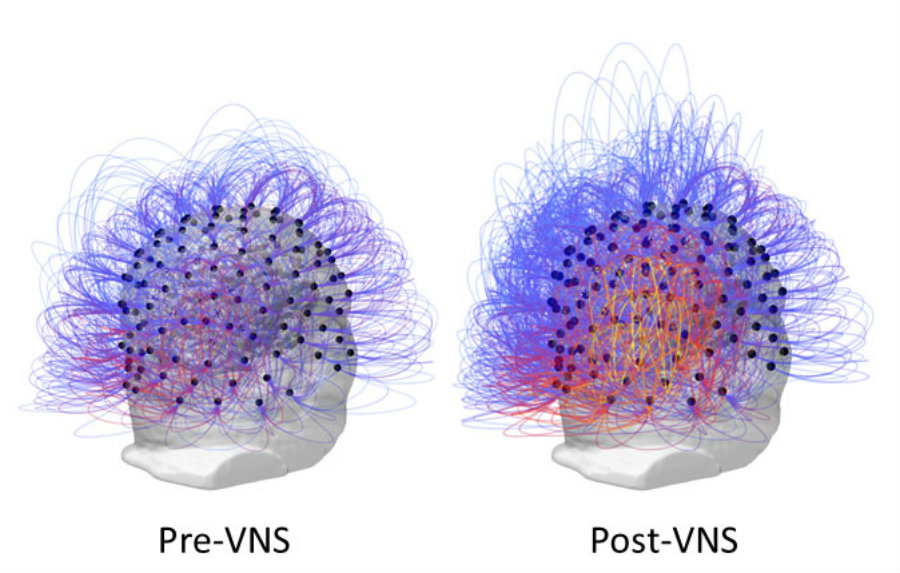A man who had been in a vegetative state for 15 years is finally reacting thanks to a treatment based on electrical nerve stimulation applied by French researchers. He suffered a severe brain injury caused by a car accident when he was 20 years old, but drugs and rehabilitation were ineffective in his case. His mother authorized the new treatment, and after a month he started showing minimal consciousness.
The researchers stimulated the vagus nerve, which is known to connect the brain to most organs of the body and plays a major role in waking and alertness, according to the paper published in the journal Current Biology.

The technique, applied at the Institut des Sciences Cognitives Marc Jeannerod in Lyon, France, contradicts the widely-accepted belief that no one can regain consciousness after a year in a coma.
“Brain plasticity and brain repair are still possible even when hope seems to have vanished,” said study co-author Dr. Angela Sirigu from the University of Lyon. “It is possible to improve a patient’s presence in the world,” she added, as quoted by the Daily Mail.
After 15 years of being completely unaware of the outside world, the unnamed man flickered back into a state of consciousness by responding to simple orders such as turning his head and following a moving mirror with his eyes. The paper states that he appeared to shed tears and smile on the left cheek listening to his favorite song, which means he can now respond to emotional stimuli.
The researchers also observed reactions to threat by widening his eyes in shock when a researcher suddenly approached his face to the patient’s. His mother reported that his 35-year-old son was able to stay awake when his therapist read him a book.
The technique improved brain activity after a month
The team of researchers wanted to choose a very complicated case to attribute the results exclusively to the treatment, which is why they selected a patient who had been in a vegetative state for 15 years. During a 20-minute procedure, they implanted an electrical implant to stimulate the vagus nerve in the patient’s neck.
After one month receiving a stimulation that consisted of an electric current of 1.5 Milliamperes maximum, the man’s attention and movements improved in a surprising way. The researchers made sure to record his brain activity to prove that the electrical communication between brain regions had really increased, specifically those linked to sensation and awareness.
Experts who are not part of the research warn that the technique has only been applied to one patient only and the results cannot extrapolate to all vegetative patients. Sirigu clarifies that the man is still paralyzed and is not able to communicate. However, he can now respond and is significantly more aware of the world around him. The findings give hope to the families of persistently vegetative patients that one day they might be able to respond to the outside world.
Sirigu believes that patients who regain consciousness and the ability to communicate should be told about their severely injured state so they can decide by themselves whether they want to continue fighting for their lives or they want euthanasia instead.
Niels Birbaumer, a leading expert in the field of brain-computer interfaces to help restore communication in patients with neurological disorders, noted that euthanasia is very common among a significant number of vegetative patients when hopes vanish, as reported by The Guardian. The expert of the University of Tübingen said this new research shows sufficient evidence to affirm that paralyzed patients are not hopeless after 12 months.
Future applications
Sirigu and her team have plans to apply the same procedure to patients with less severe brain injuries with hopes of observing more significant improvements. She explained that some patients might have an intact cortex – the brain area that allows performance of cognitive tasks – but who have limited awareness as a result of brain stem injuries. In such cases, the technique could be more successful.
Vegal nerve stimulation (VNS) could be combined with different forms of rehabilitation in future research, according to Damian Cruse, a cognitive neuroscientist at the University of Birmingham.

“If you can just push the patient over the threshold so they can start responding to external stimulation you can maybe help them follow speech therapy and get them to a level where they can start to communicate,” he said, as quoted by The Guardian.
Other experts believe that it is too soon to celebrate the results. Dr. Vladimir Litvak, senior lecturer at the Welcome Centre for Human Neuroimaging, within UCL’s Institute of Neurology, suggested caution about the 35-year-old patient’s outcomes until the results are replicated in more patients, as reported by the Daily Mail.
Although he admitted it was “an interesting new lead,” he emphasized that it was hard to predict similar outcomes in the general patient population. Litvak added that the car accident victim was still severely disabled after reaching a state of minimal consciousness.
Similarly, Dr. David McGonigle, a neuroscientist at Cardiff University, recommends a “full randomized controlled clinical trial” to perform a deeper evaluation of the effectiveness of electrical stimulation of the vagal nerve in patients in a vegetative state.
Source: The Guardian
